Original Publication DATE: 3/29/2013
I have always been a fan of the opportunists. If I had to pick a favorite bird it would be the noble turkey vultures—who soar thermals from coast to coast, contemplating a smorgasbord of fetid and rotten treats for daily sustenance. Douglas-firs are one of the most ubiquitous western conifers—taking purchase on high mountain peaks, coastal sand dunes, temperate rainforests, and sterile serpentine soils. However, some species are so specialized that, without proper and specific biotic and abiotic interactions, they would have long-gone extinct or never evolved at all.
In ecology, the term endemism defines when an organism is unique to a certain region like an island or mountain range. Endemic species are either newly evolved to fit a changing landscape (neoendemic) or a relict of a once broader existence, now restricted to a smaller region (paleoendemic). Neoendemics are species that have adaptively radiated from an older one through vicariance–with an ecology sculpted by edaphic, climatic, and topographic isolation in “recent” history. Relative to other conifers, some of California’s cypresses are an examples of this type of endemism. Through microsite isolation new species have evolved from a common ancestor where new traits are selected through ecological release to fit specific environments. Paleoendemics, like the Redwoods, Monterey cypress, Monterey pine and Santa Lucia fir once had broader ranges but are now restricted, through climatic changes, to environments which mimic those of the ancient past.
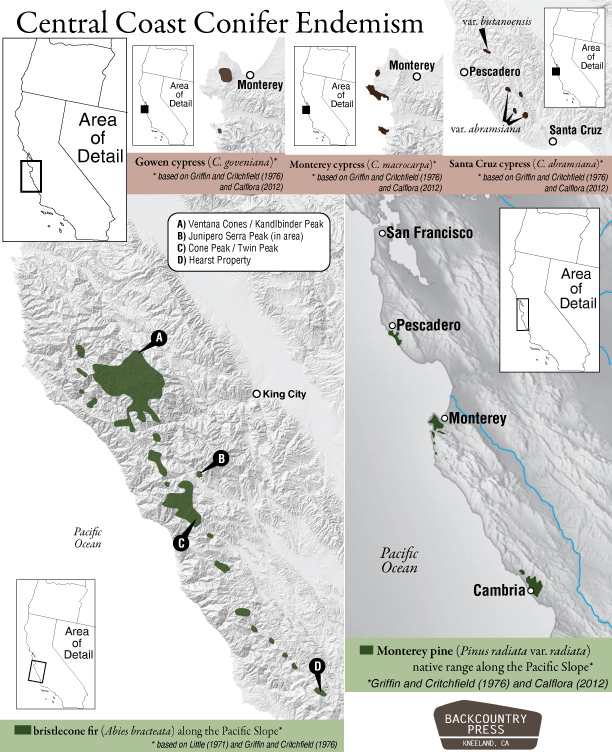
Point Lobos State Reserve: Where paleoendemics have persisted, neoendemics have evolved, and paleoendemics disperse again
At the southern end of Carmel Bay, Point Lobos State Reserve is an amazing destination for observing rare plants and interpreting endemism. The region is home to two endemic conifers and one more whose range extends just north and south.
Where paleoendemics have persisted
Paleobotanists believe that both the Monterey pine and Monterey cypress once had wider ranges along the Pacific Slope of western North America. There is little fossil evidence to suggest historic ranges were continuous, instead populations were probably always fragmented by fire events and climatic shifts. For instance, Monterey pine pioneered new habitat during warm and dry times and then retreated southward as ice ages set in (Millar 1998). In her study Connie Millar says that the… “times of abundance of Monterey Pine correlated also with increases in charcoal abundances in the sediment cores, corroborating that fire plays an important role in dispersal and spread of Monterey Pines by opening cones and preparing seed beds.” Today, the only native populations of the Monterrey pines and cypresses occur along California’s central coast.

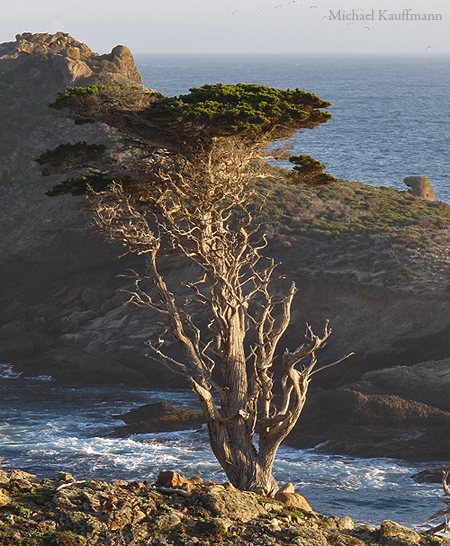
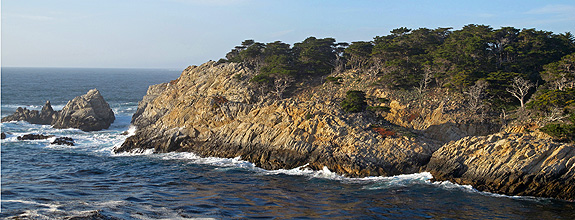
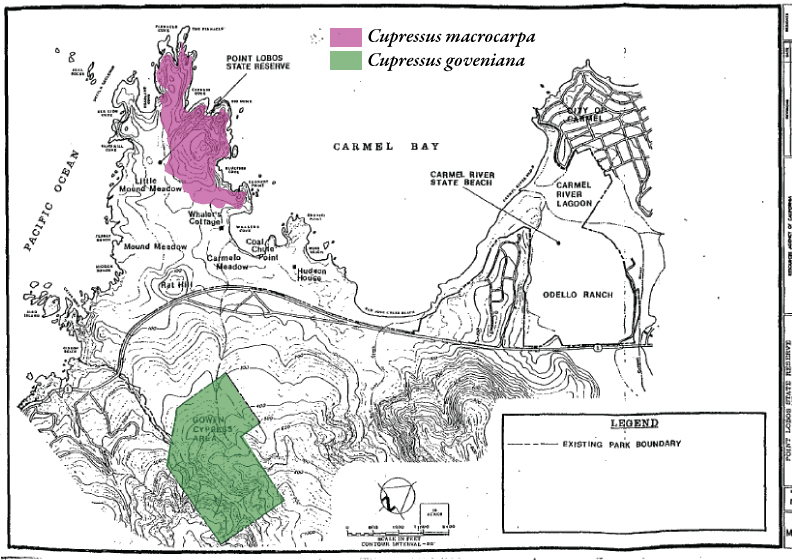
Where neoendemics have evolved
OK this can be debated, mostly because conifer lineages are so darn old themselves. But what is clear about the evolution of the Gowen cypress is that it came from a Monterey cypress ancestor (Mao 2010). While the time of divergence is unclear, at least in the sources I found, the species that evolved some time ago on marine terraces and spread across the central coast, is becoming isolated and diverging once again. Today the Gowen, Santa Cruz, and Mendocino cypresses survive in regionally specific microsites yet are closely related by ecology and morphology. All three favor coastal marine terraces where poor soils and fire are common. Because of the geographic isolation and thus allopatric speciation, botanists are now choosing to classify the Gowen, Santa Cruz and Mendocino cypress and separate species (Lanner 2007). In doing so, it is safe to call them neoendemics–at least relative to their conifer neighbors the Monterey pine and Monterey cypress. Today, Gowen cypresses only survive on the marine terraces around Carmel Bay
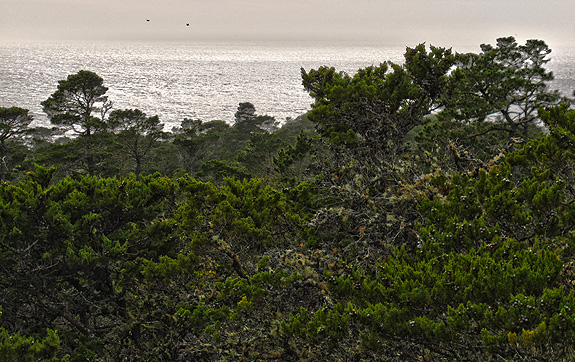
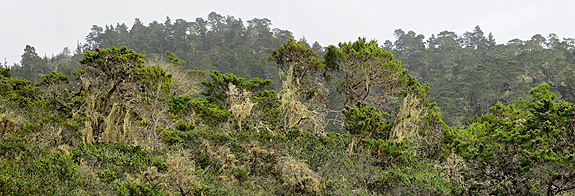
Where paleoendemics disperse again
This is one of the coolest parts of the story of the paleoendemic Monterey pines and cypresses. Both species are now a common site along the coastal highways of California north into Washington State. Humans have naturalized them, creating jungles of once-restricted neoendemics decorating our asphalt pipelines. These two species are doing are doing well–so well that they are now common across the world in temperate and subtropical regions. The Monterey pine is so widespread that it is the most common pine of the Southern Hemisphere (where pines are not native). However this dispersal, promulgated by humans, may come at a cost–the ecological release of this ancient genetic line into new habitats is threatening the refined genetic code of the native populations around Carmel Bay.
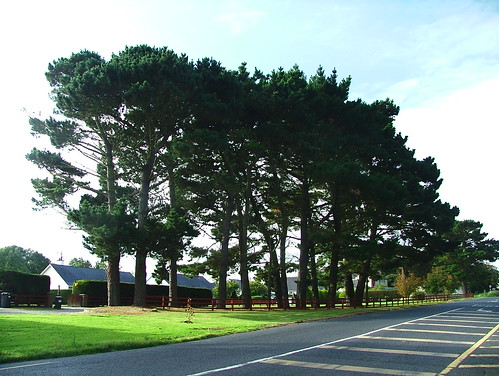
Resources:
- Plant List for Point Lobos State Reserve
- Point Lobos Foundation: Monterey Cypress Evolution (lots of misspellings…but seems like the facts are right)
Citations:
- Lanner, R.M. 2007. Conifers of California. Los Olivos, California: Cachuma Press.
- Mao Kangshan, Hao Gang, Liu Jianquan, R. P. Adams and R. I. Milne. 2010. Diversification and biogeography of Juniperus (Cupressaceae): variable diversification rates and multiple intercontinental dispersals. New Phytologist188(1): 254-272.
- Millar, C.I. 1998. Reconsidering the Conservation of Monterey Pine. Fremontia 26(3):12–16.